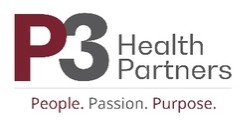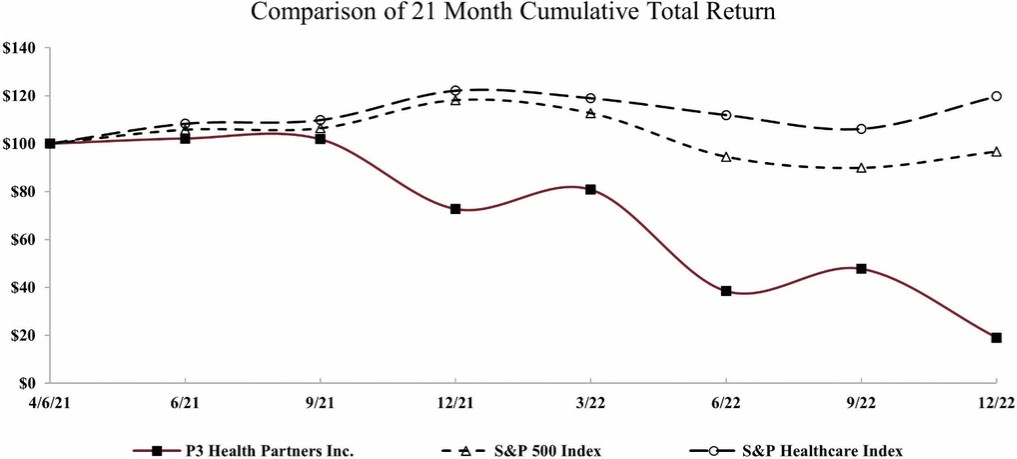such requirements or adequately address
privacy and security concerns, even if unfounded, could result in additional cost and liability to us, damage our reputation, and adversely
affect our business and results of operations.
Legal
proceedings in connection with the Business Combinations, the outcome of which is uncertain, could draw the attention of our management
team away from the operation of our business.
Prior to execution of
the definitive agreements for the Business Combinations, Hudson Vegas Investment SPV, LLC, (“Hudson”), one of our existing
equity holders, asserted that it had an option to purchase additional equity interests in P3 Health Group Holdings, LLC (“Legacy
P3”) in connection with the pending transaction with Foresight (the “Purchase Option”). We do not agree that the
Purchase Option applies to the Business Combinations. On June 11, 2021, Hudson filed an action in the Delaware Court of Chancery (the
“Hudson Action”), in which it challenged the Business Combinations. Specifically, Hudson purports to assert claims against
Legacy P3, the members of the Legacy P3 Board of Managers, certain of the Legacy P3 officers and Chicago Pacific Founders Fund, L.P. (“CPF”),
for breach of the Third Amended and Restated Limited Liability Company Agreement of Legacy P3, dated as of April 16, 2020 (the “Legacy
P3 LLC Agreement”), (against Legacy P3 and CPF), breach of fiduciary duty (against certain of Legacy P3’s officers) and
breach of alleged contractual standards of conduct (against the Legacy P3 Board of Managers) in connection with the process leading up
to, and approval of, the Business Combinations. In the Hudson Action, Hudson sought to enjoin the consummation of the Business Combinations,
and seeks a declaration that the Business Combinations violate its rights under the Legacy P3 LLC Agreement, a declaration that the members
of the Legacy P3 Board of Managers and certain of Legacy P3’s officers breached their fiduciary duties, and money damages including
attorneys’ fees.
See “Item 3.
Legal Proceedings” for a description of the Hudson Class D Dispute proceedings.
Defending or settling
this lawsuit could draw the attention of our management team away from the operation of our business and while we are indemnified by the
P3 Equityholders for costs in connection with this lawsuit, it is possible that we could nonetheless incur financial losses if disputes
arise with respect to the extent of the indemnification obligations.
Any
future litigation against us could be costly and time-consuming to defend.
We may become subject,
from time to time, to legal proceedings, federal and state audits, government investigations, and payor audits, investigations, overpayments,
and claims that arise in the ordinary course of business such as claims brought by our clients in connection with commercial disputes
or employment claims made by our current or former associates. Litigation and audits may result in substantial costs and may divert management’s
attention and resources, which may substantially harm our business, financial condition and results of operations. Insurance may not cover
such claims, may not provide sufficient payments to cover all of the costs to resolve one or more such claims and may not continue to
be available on terms acceptable to us. A claim brought against us that is uninsured or underinsured could result in unanticipated costs,
thereby reducing our earnings and leading analysts or potential investors to reduce their expectations of our performance, which could
reduce the market price of our Class A common stock or publicly traded warrants.
Changes
in U.S. tax laws, and the adoption of tax reform policies or changes in tax legislation or policies in jurisdictions outside of the United
States, could adversely affect our operating results and financial condition.
We are subject to federal
and state income and non-income taxes in the United States. Tax laws, regulations, and administrative practices in various jurisdictions
may be subject to significant change, with or without notice, due to economic, political, and other conditions, and significant judgment
is required in evaluating and estimating these taxes. For example, legislation commonly known as the Inflation Reduction Act (“IRA”),
was signed into law on August 16, 2022. Among other things, the IRA includes a 1% excise tax on corporate stock repurchases, applicable
to repurchases after December 31, 2022. We are in the process of evaluating the potential impacts of the IRA to us.
Our effective tax rates
could be affected by numerous factors, such as entry into new businesses and geographies, changes to our existing business and operations,
acquisitions and investments and how they are financed, changes in our stock price, changes in our deferred tax assets and liabilities
and their valuation, and changes in the relevant tax, accounting, and other laws, regulations, administrative practices, principles and
interpretations. We are required to take positions regarding the interpretation of complex statutory and regulatory tax rules and
on valuation matters that are subject to uncertainty, and tax authorities may challenge the positions that we take.


